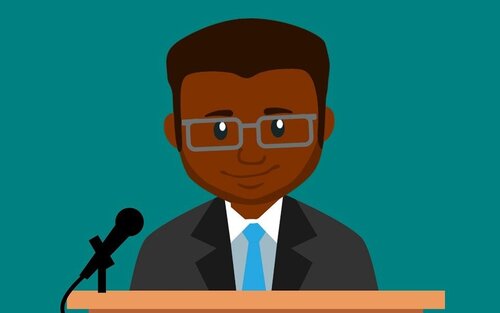“Persons living with disabilities” is a common phrase for people who are not conversant with inclusive language. In this article we are going discuss what is inclusive language and the importance of self-identification.
Persons with disabilities is the right term and not "living with."
1. What is Inclusive Language?
Inclusive language refers to the practice of using words and expressions that respect and acknowledge the dignity, individuality, and capabilities of people with disabilities. This approach aims to eliminate bias, stereotypes, and discrimination in communication, ensuring that people with disabilities are represented accurately and respectfully. Disability-inclusive language emphasizes the person first, focusing on their identity and humanity rather than their disability.
Why is Disability-Inclusive Language Important?
· Promotes Respect and Dignity
Using disability-inclusive language helps foster respect and dignity for individuals with disabilities. It recognizes their value as individuals rather than defining them by their disabilities. For example, using "person with a disability" instead of "disabled person" places emphasis on the person rather than the condition.
· Reduces Stigma and Stereotypes
Inclusive language helps to break down the stereotypes and stigma associated with disabilities. Language shapes perception: thus, using respectful and accurate terms can contribute to a more inclusive society. Avoiding terms like "handicapped" or "crippled" and instead using "person with a physical disability" helps to combat negative connotations and promote understanding.
· Enhances Communication and Understanding
Clear and respectful communication is essential in fostering mutual understanding. Disability-inclusive language ensures that messages are conveyed in a way that is accessible and respectful to everyone, including those with disabilities. This leads to more effective and inclusive interactions.
2. What is Self-Identification?
Self-identification refers to the way individuals choose to define and express their own identity, including aspects such as race, disability, ethnicity, gender and sexual orientation. It allows people to articulate who they are in their own terms, reflecting their personal experiences, preferences, and sense of self.
In the context of disability, self-identification involves individuals with disabilities choosing how they want to be referred to, such as using person-first language ("person with a disability") or identity-first language ("disabled person").
Respecting Self-Identification
Empowerment Through Self-Identification
Respecting how individuals with disabilities choose to self-identify is a crucial aspect of using inclusive language. Self-identification allows individuals to express their identity in a way that feels authentic and empowering to them. For instance, some people may prefer identity-first language (e.g., "autistic person") as it acknowledges their disability as an integral part of who they are, while others may prefer person-first language (e.g., "person with autism") to emphasize their humanity first.
Acknowledging Diversity
People with disabilities are a diverse group with varied experiences and preferences. Respecting their self-identification acknowledges this diversity and avoids the imposition of a one-size-fits-all label. It is essential to listen to and use the terms that individuals prefer, as this shows respect for their personal experiences and choices.
Building Inclusive Communities
Respecting self-identification is key to building truly inclusive communities. It creates an environment where individuals feel seen, heard, and respected. When people feel valued for who they are, including their preferred language, it fosters a sense of belonging and community.
Disability-inclusive language is a vital tool in promoting respect, reducing stigma, and enhancing communication. It acknowledges the individuality and humanity of people with disabilities and contributes to a more inclusive society. Respecting how individuals choose to self-identify further empowers them and acknowledges the diversity within the disability community.
For more information on disability related terms, the Disability-Inclusive language guidelines by the UNCRPD can be helpful
Article by: Emomeri Maryanne

